Should you feel guilty for celebrating Halloween? It depends on how open-minded you are about ancient rituals for demon placation.
by Jacob Hodgen
Religious leaders have always been quick to throw things out for failing to meet divine standards of excellence.
Whether it’s the Apocrypha, R-rated movies, or even Sean Hannity, you never know what will be denounced next by the clergy and cast aside as unclean. Yet somehow, against all odds, one particularly intriguing potential vice has thus far escaped mainstream condemnation: Halloween.
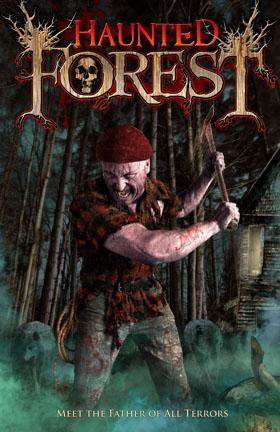
The Hershey Corporation thanks you in advance for your open-mindedness this year towards demon-appeasement rituals.
In Utah, Halloween is Huge
At Gardner Village in West Jordan, you can bring your kids to “Breakfast with a Witch” and buy tickets to the evening’s “Witchapalooza” shopping and musical event.
The Castle of Chaos and Nightmare on 13th in Salt Lake City are two of the top haunted houses in the entire country. Lagoon, the Hogle Zoo, and the Red Butte Gardens also all have spooky events for the kids each year. In Ogden, which banned haunted houses in 2004, you can visit the Eccles Haunted Dinosaur Park or sign up for the Lazarus Maze Interactive Dinner Theater. Go for a haunted train ride on the Heber Creeper, and then take your pets to the “Howl-O-Ween” dog parade in Park City.
Then there are the really scary ones. The Utah State Mental Hospital in Provo had its own haunted house attraction staffed by its own mental patients until 1998. Really. The 113 year-old abandoned hospital in Lehi hosted a haunted house attraction for several years that took patrons through an actual crematorium. Over 4,000 people are estimated to have died in the hospital, and many locals believe it to actually be haunted.
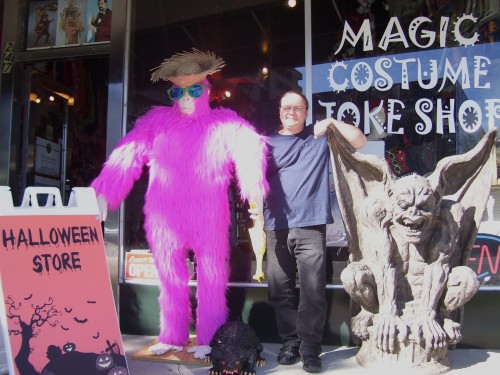
Tracy Kidd owns the House of Chuckles costume and magic shop on 3rd South in Salt Lake. His store is currently crawling with skeletons, zombies, and every kind of crazy costume you can think of. Halloween is both a hobby and a business for Tracy, who has always been interested in horror films and used to volunteer annually at the haunted house put on by the March of Dimes.
His shop has been outfitting Halloween goers since 1982, and he tells me it’s never been controversial. “When I was a kid,” he says, “we’d put on our own little haunted houses for church. It wasn’t something we ever questioned.” Tracy says he thinks it‘s odd that people who don’t watch R-rated movies will have no trouble sending their kids to a haunted houses, but he doesn’t blame them. “Halloween is just plain fun,” he says. “No one wants to miss out.”
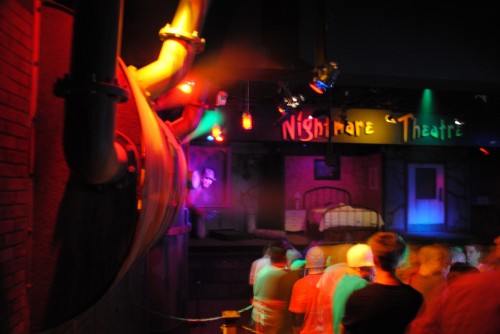
So Utah loves Halloween. What’s the big deal? Remember, this is the same state that still refuses to teach sex education in public schools, almost kicked Toby Keith out of the Stadium of Fire for saying “ass,” and up until this summer had laws banning children from seeing alcohol poured in restaurants, lest their minds be irrecoverably corrupted.
Consider for a moment that just down the street from BYU in Provo was the popular Scream Asylum attraction that ended in 2009. Though BYU administrators will censor sculptures by Rodin in their art gallery for being “inappropriate,” its students would flock to the local haunted house whose television commercial featured actors being tortured.
Though Thanksgiving Point refused to show Brüno on the grounds of its “offensive” content, they have a haunted corn maze for the kids featuring animatronic evil spirits. It is one of numerous haunted corn mazes for kids around the state.
The Demonic History of a Great American Holiday
Halloween has a rich history that dates back to the Celtic festival of Samhain. The event centered around the notion that the walls separating our world and the spirit realm became thin and that evil spirits had to be warded away, lest they come to prey upon your family.
Learn more about the history of Halloween from The Onion.
The festival was both a celebration of the harvest, and a serious Pagan ritual. Practitioners believed that if they failed to keep evil spirits away, they could be cursed or even killed. Families would slaughter livestock in blood sacrifice and cast the bones into large bonfires, which created a powerful magic spell. Other magic rituals and divination rites were performed to further bless the village.
The custom of wearing costumes and masks was designed to trick evil spirits and scare them away. Turnips were carved to look like demons and were used as part of the demon placation ceremony.
In general, it was good—mostly clean—Pagan fun.
Religion and Halloween
Of course, not many people in Utah perform animal sacrifice or divination for Halloween any more, but there is still quite a bit of controversy among the history savvy. Christianity, by definition, mandates belief in ghosts, demons, and the paranormal.
Michael Zimmer is the director of the Paranormal Investigations Team of Utah, which is a scientific-based group that examines purported claims of supernatural activities. He lives in Ogden and is an expert on local myths related to ghosts and the paranormal.

“For whatever reason,” he tells me, “what Halloween has become is so far from the Pagan days, there is no longer any connection for most people. Religious people seem to be trying to de-demonize Halloween. They mock and have fun with it. They try to take away some of the fear and danger associated with it. It always seemed inconsistent to me.”
Though Michael has conducted hundreds of paranormal investigations over the last decade, it might surprise you that he’s not a big fan of what the holiday has become. “It’s just a date for me. What we do has nothing to do with Halloween. There’s no ‘thinness of the veil’; there’s no heightened activity this time of the year. In fact, it negatively affects our work.” He says despite Utah’s particularly devout demographic, when it comes to the paranormal, many people who claim to be religious base many of their beliefs not on the Bible but from, “less-than-honest shows like ‘My Ghost Story’ or ‘Paranormal State.’”
Hollywood ghosts aside, for believers of the Bible, the menace of spirits is very real and not something to be taken lightly. It recounts numerous stories of hostile encounters with evil spirits, such as when Saul participates in a rather productive séance with the Witch of Endor. Exodus 22:18 issues in no uncertain terms the following bloody fatwā: “Thou shalt not suffer a witch to live.”
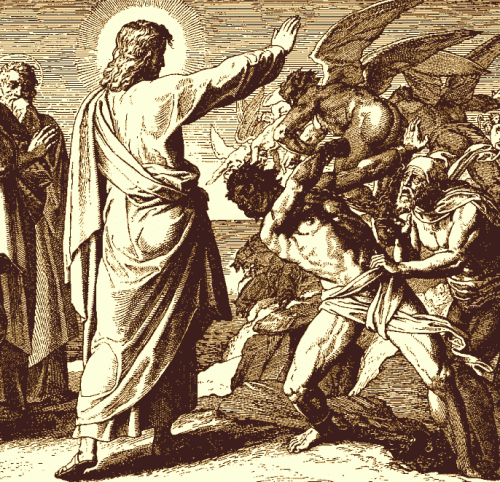
But these aren’t merely Bronze Age barbarisms contemporary Christians in Utah can shrug off as “from a different time.” The characters in the New Testament were continually engaged in confrontations with the paranormal. In Acts, the Apostles have a showdown with Simon the evil sorcerer, Paul lays the smackdown in Galatians declaring the sin of witchcraft is akin to adultery, and John is sufficiently concerned to make note in Revelations that sorcerers will be cast in a “lake which burneth with fire and brimstone.” Of course the believer can’t forget that Jesus routinely squared off with possessed people and cast out actual demons. In short, you would never catch the apostles dressing their kids up as witches or ghosts and taking them trick or treating. They would have been executed for it.
You don’t have to tell Utah’s Jehovah’s Witnesses, who seem to have a better grasp of Pagan history than most of their Christian counterparts. Halloween, Christmas, and birthday celebrations, which each have clear Pagan origins, are explicitly banned for all faithful members. Strict Jews and Muslims take a similar view and also abstain from Halloween festivities.
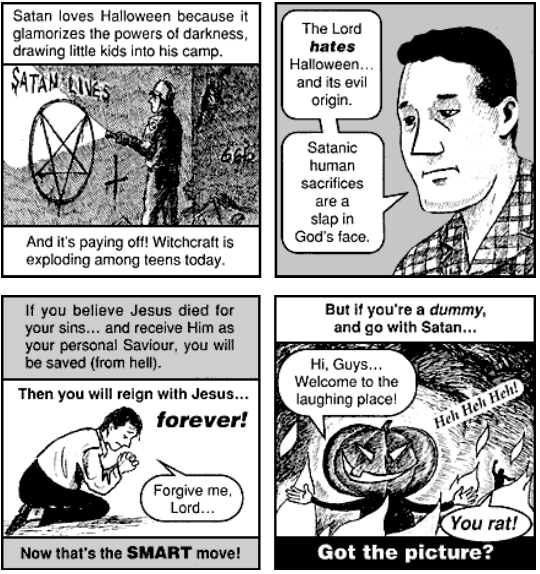
But it’s not real witchcraft, you say—it’s just pretend witchcraft! It’s just for fun, right? Try telling that to Jack Chick, the best selling graphic artist in history. No one hates Halloween more than Jack Chick. He also hates Dungeon and Dragons and Harry Potter—naturally.
While a few other hard-line Christian groups forbid members from celebrating Halloween, some Evangelical denominations have taken to using the haunted house model as an aggressive tool of conversion. The “Hell House” in Cedar Hill, Texas is one such example.
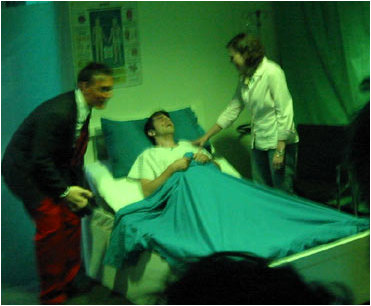
Here, patrons are led through a series of Christian-themed horror scenes, such as a bloody abortion clinic with a screaming teenage girl, and a room where a gay man is dying from AIDS. The Hell House is staffed by volunteers from a local church, and it concludes with a room where patrons are told they too will go to hell if they don’t repent right then and there. Customers can then either leave the building or be ushered into a separate area where on-call staff will pray for them and allow them to confess their sins.
Love them or hate them, the Hell House crew might be on to something. In a rather scary way, Halloween is quintessentially Christian.
Mormonism and Witchcraft
Ironically, Mormon leaders have also condemned Dungeons and Dragons and other things, such as heavy metal music, tarot cards, and Ouija Boards as satanic, while simultaneously embracing Halloween. Mormons love it to the extent that many chapels in Utah hold “Trunk-or-treats” to provide a safe trick-or-treating environment for LDS kids. The Friend, New Era, and Ensign magazine have also all featured articles on ideas for fun and safe Halloween activities.
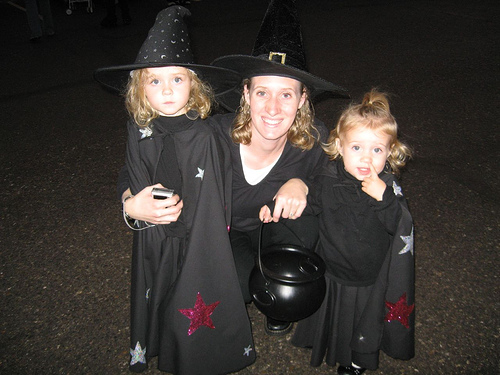
This isn’t without some controversy amongst the faithful. Boyd K. Packer of the church’s twelve apostles cautioned against anything that might lead people to evil:
“A warning: there is a dark side to spiritual things. In a moment of curiosity or reckless bravado some teenagers have been tempted to toy with Satan worship. Don’t you ever do that! Don’t associate with those who do! You have no idea of the danger! Leave it alone! And there are other foolish games and activities that are on that dark side. Leave them alone!” (Ensign, May. 1989)
The threat of evil spirits is no joke in Mormon sacred texts, as they continue to paint the Biblical image of a world filled with strange and dangerous entities. Not only does Joseph Smith describe in detail how he was attacked by evil spirits during his first vision, in chapter 129 of the Doctrine and Covenants, he offers a handy guide for the faithful on how to use a simple handshake to determine if the spirit that is visiting them is from God or the Devil.

Some might think it is paradoxical that members of any Bible believing faith would flock to haunted houses or participate in church-sponsored Halloween activities. However, considering how common demons and evil spirits are in Christian theology, perhaps we should all be wondering why they don’t take Halloween and the business of placating evil spirits more seriously than they currently do.
You probably don’t have to worry about being executed for trick or treating, but should you feel guilty for celebrating Halloween this year? It depends. How do feel about ancient rituals for demon placation and the literalness of the Bible? Considering how much fun is at stake, though, I bet you don’t think too hard. In the epic battle between dogma and candy, well, you know who always prevails in the end.
Halloween is one temptation most Utahns are never able to resist! §
About the author:
The author is a lifelong Halloween enthusiast. He attends and volunteers at various haunted house attractions every year and is a horror film buff of monstrous proportions. He will take all the demon placation he can get.

